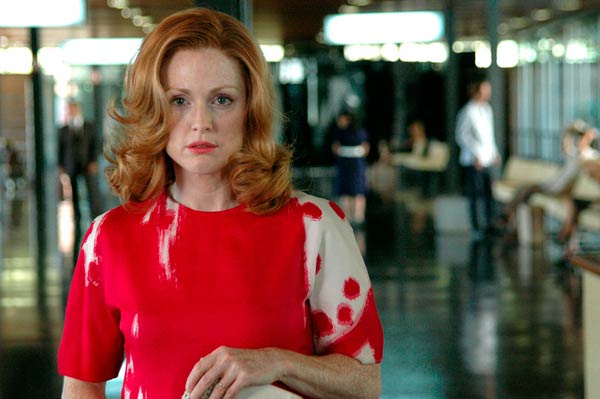By JAMES NADEAU
Tom Kalin returns to feature film directing with his new project Savage Grace. Based upon the book by Natalie Robins and Steven M. L. Aronson, the film details the decadence and downward spiral of the wealthy socialite Barbara Daly Baekeland and her son Antony. Barbara was a middle-class actress and model who married Brooks Baekeland, the heir to the Bakelite fortune. Bakelite is a synthetic compound used in kitchenware, toys and jewelry. It was developed between 1907 and 1909 by Brooks’ grandfather Leo. Barbara and her son became famous, or rather infamous, when Antony murdered her in their London flat in 1972. To make this scandal even more shocking it was believed that Barbara and her son were having relations (despite the fact that he was known to be gay). The story is fascinating. It has everything one could want: drugs, adultery, homosexuality, money and incest. The film lays this all out yet I felt that I walked away not truly knowing who these people were and why their lives ended this way.
Julianne Moore plays Barbara with consummate skill yet I was left consistently cold. The intricacies of the character kept getting waylaid by stilted dialogue and Kalin’s insistence that scenes go overly long to the point where languid became turgid. In many ways Savage Grace was similar to his first film Swoon in that scenes designed to flesh out character simply dragged down the narrative. Brooke, as played by Stephen Dillane, practically oozes blue-blooded haughtiness. He plays his character so well that one can see both the admiration and disdain he has for his wife (it literally fluctuates from one to the other in several scenes). The scenes between these two fine actors should explode off the screen and yet sadly it doesn’t. With the one exception mentioned below and this one is all Julianne Moore’s.
The film begins shortly after Antony (Tony) is born. Barbara and Brooke are seen arguing over plans for the evening. Tony is left with his grandmother as the two hit the Stork Club for an evening of drinks bitter dialogue. Here we get a glimpse of Barbara’s psychoses as she leaves Brooke and their friends behind, jumping into a strangers Bentley for an extramarital dalliance. This is supposed to lay the groundwork for our understanding of the dissolution of Brooke and Barbara’s marriage. They are two arrogant, beautiful people who have what the real Brooke reportedly described as (quoting James Clavell) “Fuck-you money. I need not please nor seek to please – astonish, astound, dazzle, or be approved of by – anyone.” Yet the difference being Brooke could, and did, live this statement while Barbara was constantly fighting against her middle-class background and coming up short. Is this the tension that ultimately destroys their relationship? Who knows?
There are several attempts to open up Barbara so that we can see just who she is but they are far too few and too short to allow for any depth. Kalin quickly jumps to the more salacious aspects of the story. One of the most intense scenes of the film (and a true tour-de-force for Moore) is when she discovered that Brooke is leaving her for another women (actually their son’s girlfriend). This scene is harsh, intense and potent. Here there is a flash of a woman who will stop at nothing to get and keep what she wants but knows she has failed. It is – in a word – fierce.
The film plays out in a series of vignettes jumping several years at a time. We see Tony move from being Barbara’s companion and confidant at ten to his attempts at freedom and sexual liberation during his teenage years on the coast of Spain. Across the span of years Tony (played by Eddie Redmayne) moves from indolent ambi-sexuality to full blown Oscar Wilde-esque foppery. This final transition brings one of the more disturbing and powerful scenes in the film; when Barbara grabs his crotch, instigating sex. Moore’s face conveys the longing, desperation and loneliness present in Brooke as she reaches for the only human companionship she has consistently had by her side. It is frank and disconcerting and one of the few scenes where Kalin’s talent in subtlety actually comes to the fore. It is here where we see the power and pain that constantly shifted between the two people. This is the moment where their oddly symbiotic relationship is exposed leading both of them to their respective dooms. It is unfortunately far too late in the film. At this point I had given up caring about these people (if I ever truly did). What could have been a fine Sirk-ian true-to-life melodrama is simply an art-house attempt at shock and awe. Yes, the story is shocking and distressing (all the more so because it is true) but the film fails in allowing the characters to come to life. Which is a shame because if any actors could do it, it is those cast in these roles. You should see the film if only to watch Julianne Moore at work. She is quickly becoming my favourite actor. It is her skill that truly carries this film beyond its flaws.
- Julianne Moore
"Savage Grace" by Tom Kalin opens in theatres June 13th, 2008.





